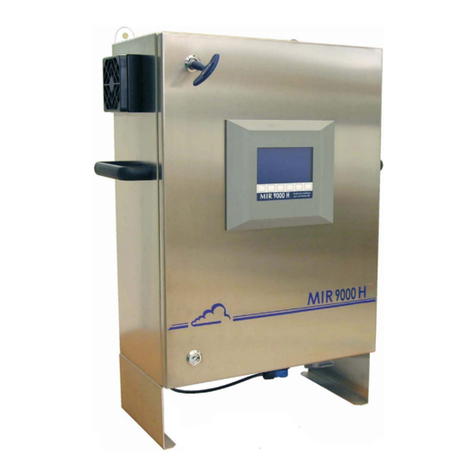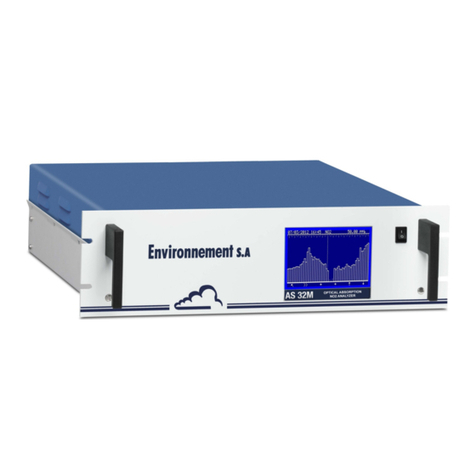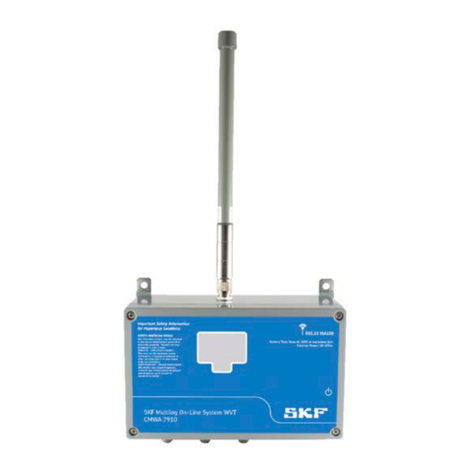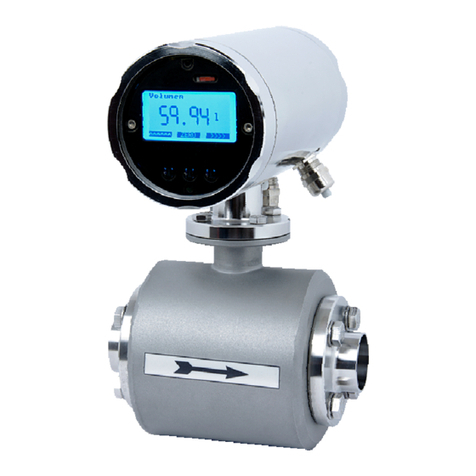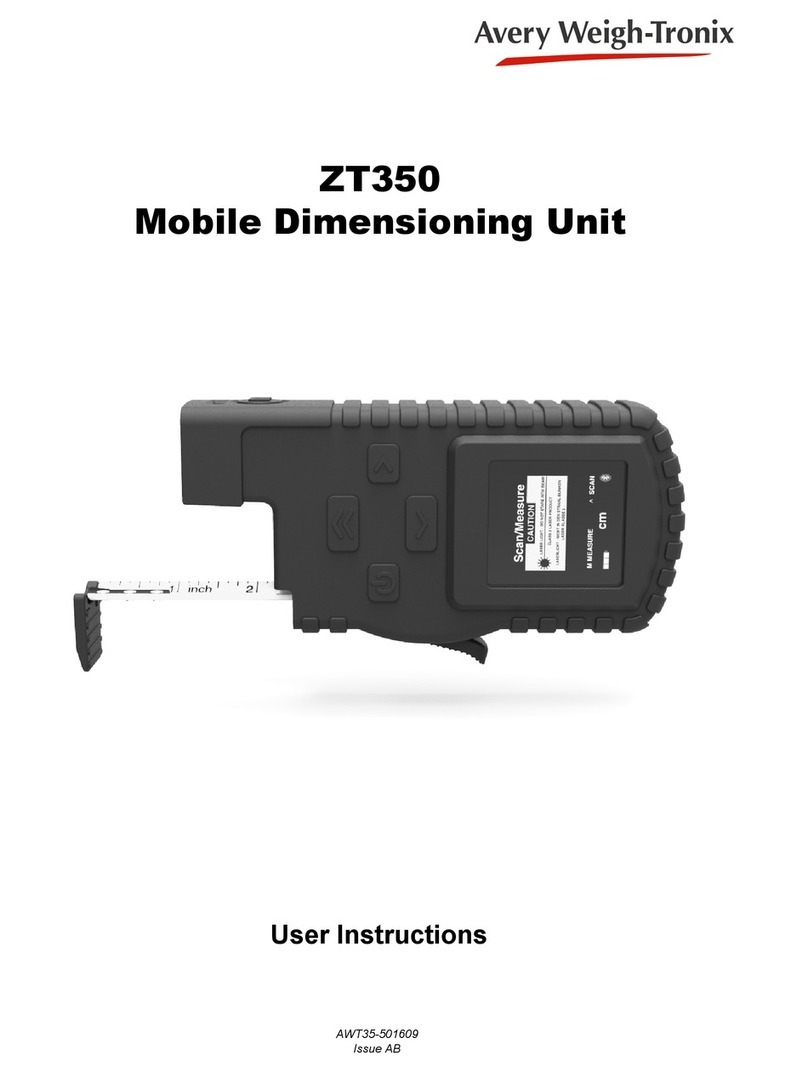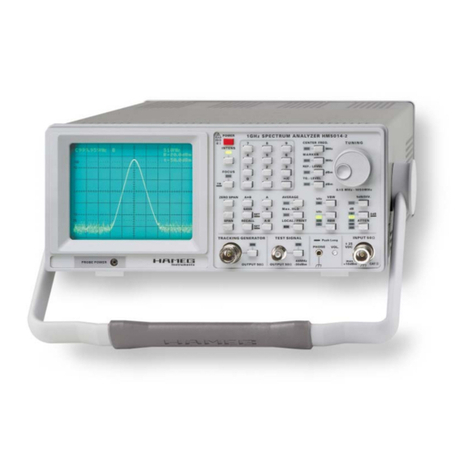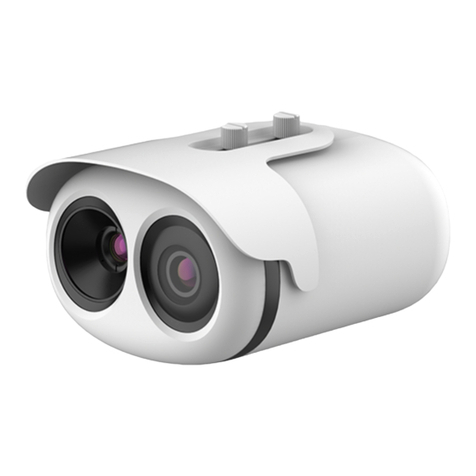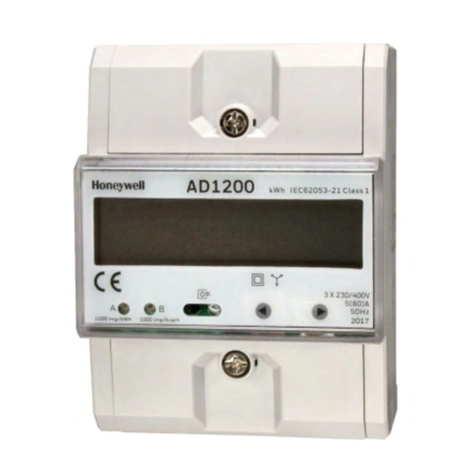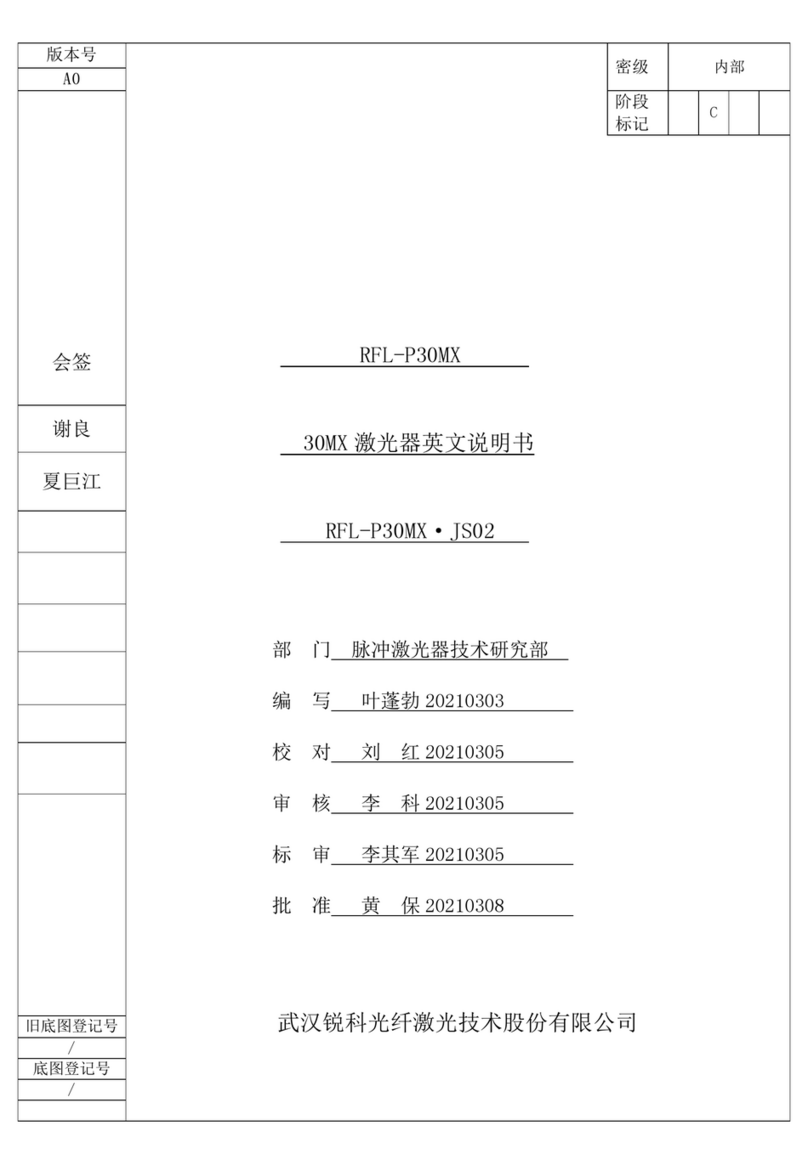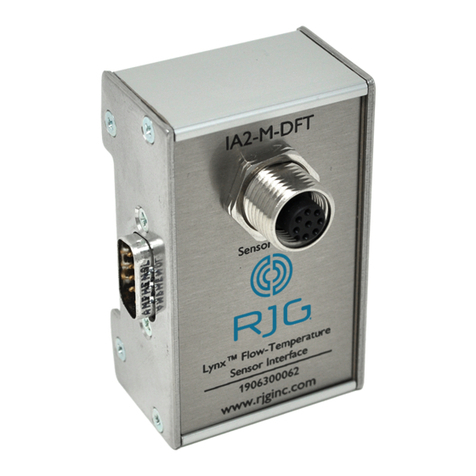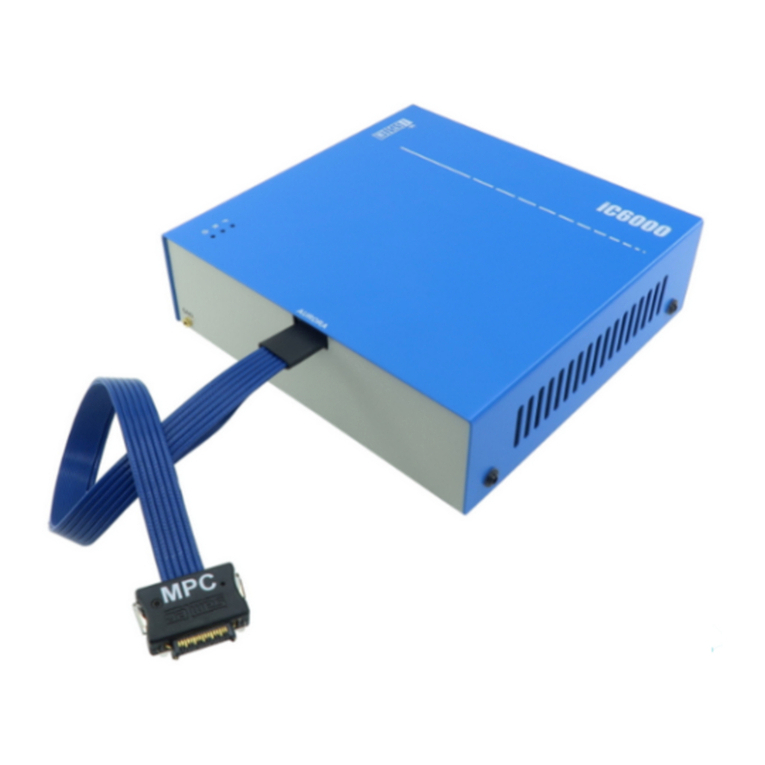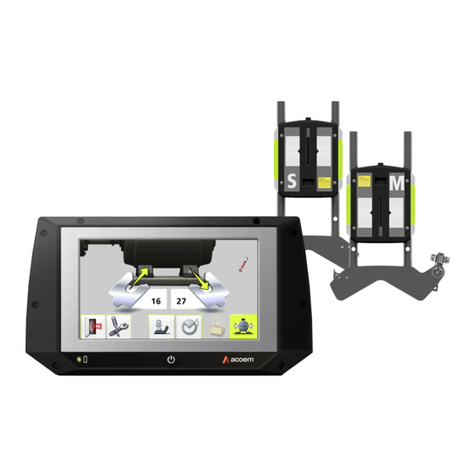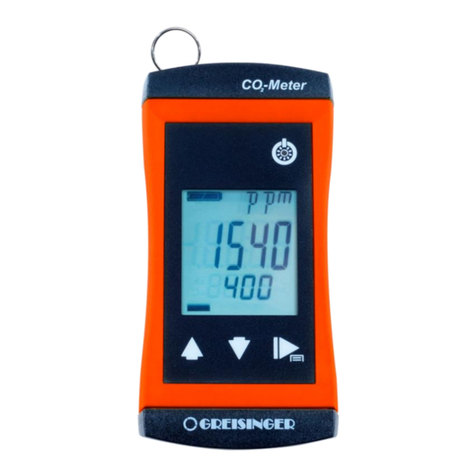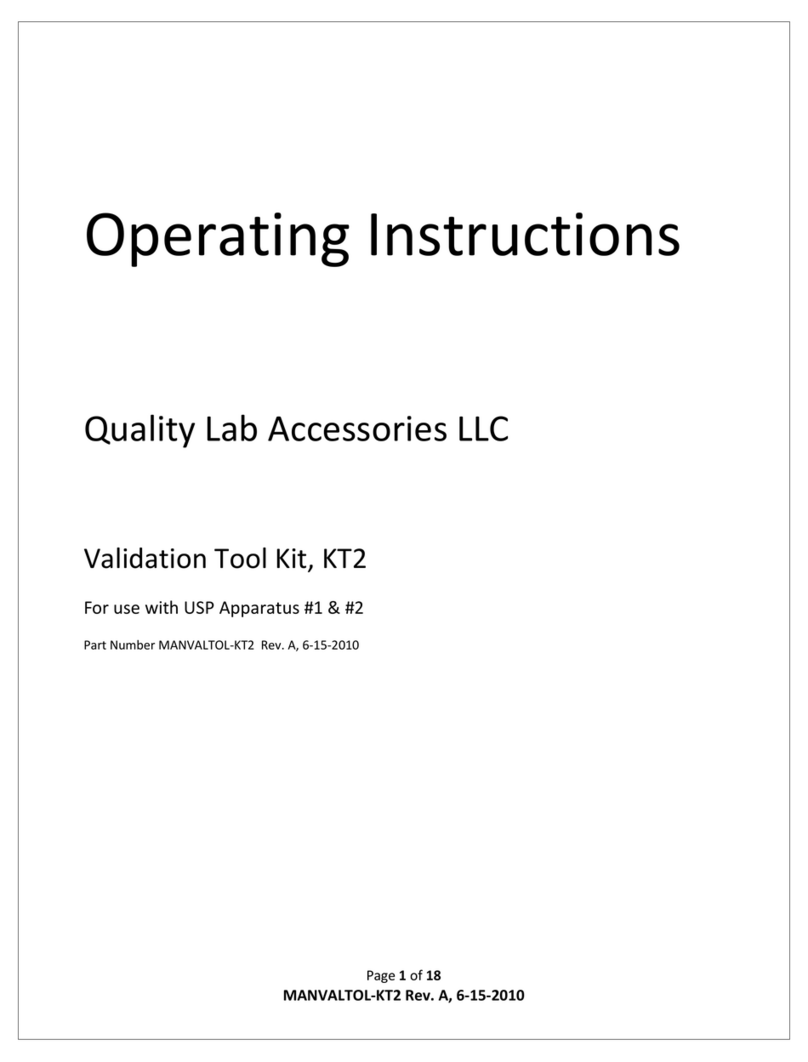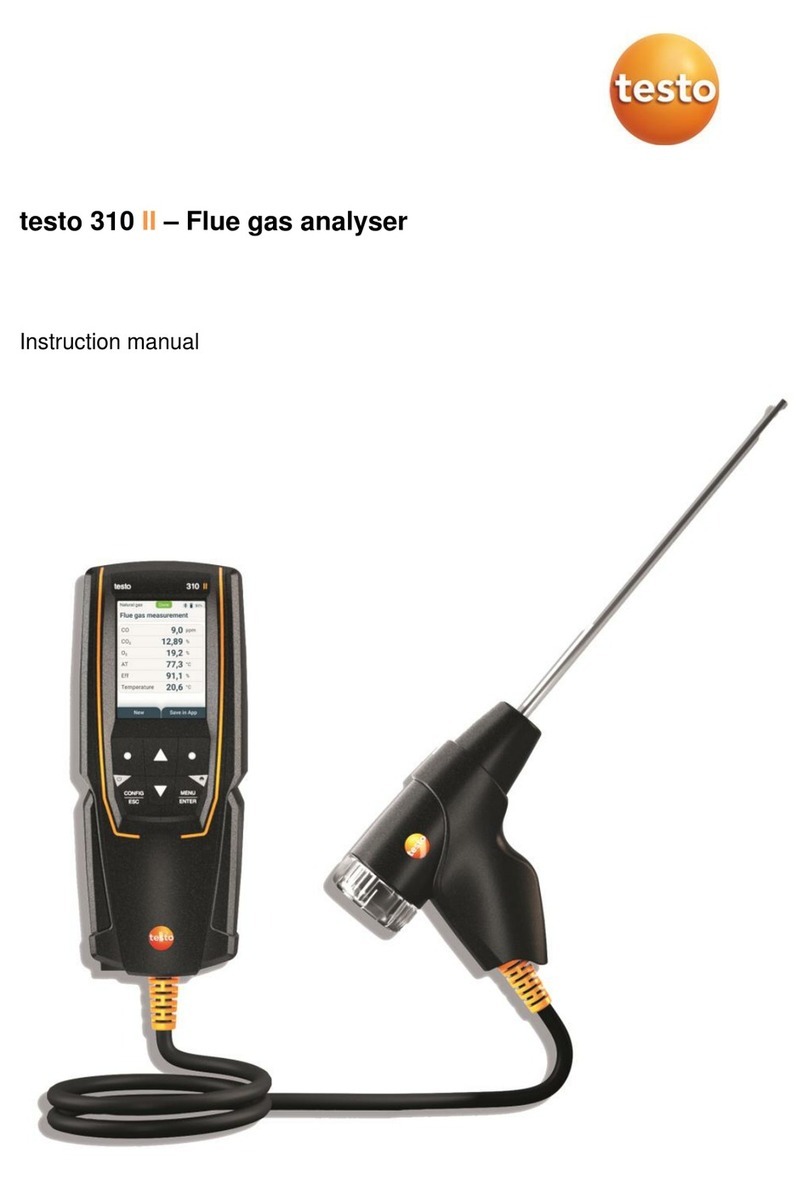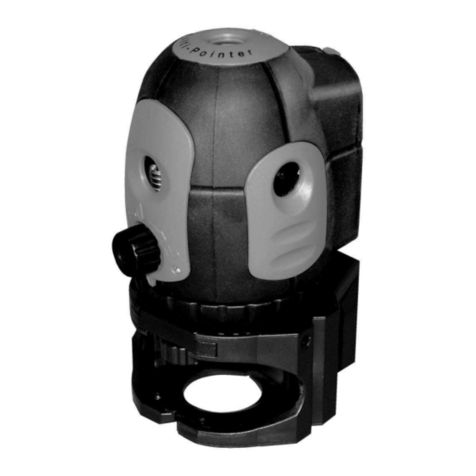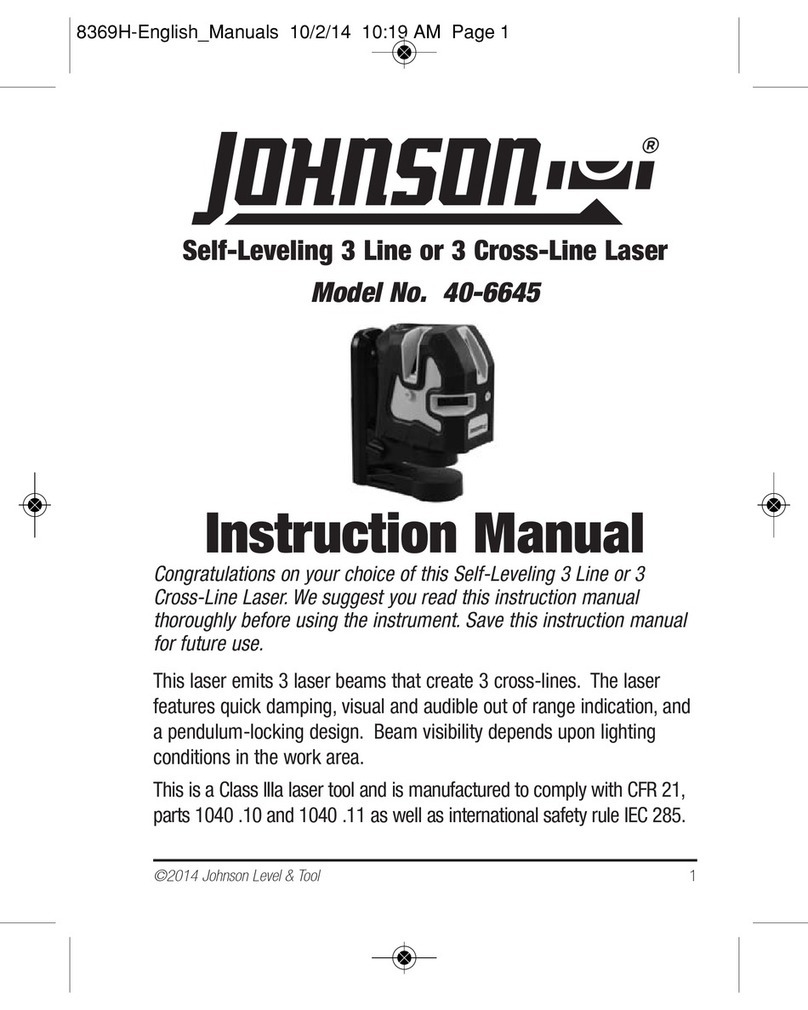Environnement Envea MIR 9000 User manual

TECHNICAL MANUAL
MIR 9000 - LCD
MULTIGAS ANALYZER
- MARCH 2018 -
111 Bd Robespierre, 78300 POISSY, FRANCE – TEL. 33–1 39.22.38.00 – FAX 33–1 39.65.38.08
http://www.environnement-sa.com

Environnement S.A MIR 9000 Duplication prohibited
0-2
JULY 2009
WARNING
The information in this document is subject to change without notice. The designer reserves
the right to upgrade his equipment without updating this document. Consequently, the
information in this document is not contractual.

Duplication prohibited MIR 9000 EnvironnementS.A
0-
3
NOVEMBER 2014
SUMMARY
CHAPTER 1 - GENERAL - CHARACTERISTICS
1.1 GENERAL 1–3
1.2 CHARACTERISTICS 1–15
CHAPTER 2 - OPERATION
2.1 INFRARED CORRELATION PRINCIPLE 2–3
2.2 PRINCIPLE APPLIED TO THE MIR 9000 2–4
2.3 DESCRIPTION OF THE MAIN MODULES 2–8
2.4 SIMPLIFIED OPERATION FLOWCHART 2–13
CHAPTER 3 – OPERATING INSTRUCTIONS
3.1 FIRST TIME RUNNING 3–4
3.2 PROGRAMMING THE MIR 9000 3–6
3.3 DESCRIPTION OF THE SCREENS 3–8
3.4 CALIBRATION 3–52
CHAPTER 4 - PREVENTIVE MAINTENANCE
4.1 SAFETY INSTRUCTIONS 4–3
4.2 MAINTENANCE CALENDAR 4–4
4.3 MAINTENANCE OPERATION SHEETS 4–4
4.4 EQUIPMENT REQUIRED FOR MAINTENANCE 4–16

Environnement S.A MIR 9000 Duplication prohibited
0-4
JULY 2009
CHAPTER 5 - CORRECTIVE MAINTENANCE
5.1 LIST OF ALARMS AND CONTROLS 5–3
5.2 ADJUSTMENT AND INSPECTION OF THE MOTHERBOARD 5–12
5.3 ADJUSTMENT AND INSPECTION OF THE MIR NH3 / H2O VERSION 5–19
5.4 CONFIGURING THE BOARDS 5–26
CHAPTER 6 - BREAK DOWN AND LOCATION
6.1 HCL DISTRIBUTION MODULE 6–2
6.2 PUMP 6–4
6.3 OPTICAL BENCH 6–6
6.4 OXYGENE PROBE 6–9
6.5 APPENDIX 6–11

Duplication prohibited MIR 9000 EnvironnementS.A
0-
5
MARCH 2018
CHAPTER 7 - APPENDICES - SCHEMES
MOTHER BOARD / CARTE MERE C01-SC0098-K 1/7
MOTHER BOARD / CARTE MERE C01-SC0098-K 2/7
MOTHER BOARD / CARTE MERE C01-SC0098-K 3/7
MOTHER BOARD / CARTE MERE C01-SC0098-K 4/7
MOTHER BOARD / CARTE MERE C01-SC0098-K 5/7
MOTHER BOARD / CARTE MERE C01-SC0098-K 6/7
MOTHER BOARD / CARTE MERE C01-SC0098-K 7/7
RS4I BOARD SCHEMATIC DIAGRAM C02-SC0271-D 1/1
DAC 4/8 BOARD BASIC DIAGRAM C02-SC0121-D 1/3
DAC 4/8 BOARD BASIC DIAGRAM C02-SC0121-D 2/3
DAC 4/8 BOARD BASIC DIAGRAM C02-SC0121-D 3/3
MOTOR CONTROL BOARD DIAGRAM C02-S2-0215-C 1/1
MICRO III BOARD BASIC DIAGRAM C03-SC0053-K 1/2
MICRO III BOARD BASIC DIAGRAM C03-SC0053-K 2/2
TIG 2 INTERFACE BOARD DIGRAM C06-SC0125-A
PYRO DETECTOR PREAMPLI BOARD DIAGRAM C06-SC0223-B
FLOW METER ADAPTATION BOARD DIAGRAM C06-SC0236-C
INTERFACE 2 BOARD BASIC DIAGRAM C06-SC0251-E 1/2
INTERFACE 2 BOARD BASIC DIAGRAM C06-SC0251-E 2/2
O2 BOARD DIAGRAM C06-SC0323-A 1/1
SIR REGULATION BOARD DIAGRAM C06-SC0326-D
MOTOR POWER BOARD DIAGRAM C06-S2-0202-B 1/1
PRESSURE SENSOR BOARD DIAGRAM C06-S3-0291-1
ADDENDUM DAC8+ BOARD

EnvironnementS.A MIR 9000 Duplication prohibited
0-6 NOVEMBER 2014
LIST OF FIGURES
Figure 1–1 – Presentation of the MIR 9000 analyzer 1–2
Figure 1–2 – Display and keyboard 1–4
Figure 1–3 – Lower panel of the MIR 9000 – fixed tight box version 1–6
Figure 1–4 – Lower panel of the MIR 9000 NH3/H2O option – fixed tight box version 1–6
Figure 1–5– Components location of the MIR 9000 – fixed tight box version 1–8
Figure 1–6 – Components location of the MIR 9000 NH3/H2O option – fixed tight box version 1–10
Figure 1–7 – Analysis cabinet 1–12
Figure 1–8 – Example of application 1–14
Figure 1–9– MIR 9000 links 1–16
Figure 1–10– MIR 9000 –NH3/ H2O option links 1–16
Figure 1–11 – Dimensions of the MIR9000 fixed tight box version 1–18
Figure 1–12– Dimensions of the MIR Rack version 1–19
Figure 2–1 – Infrared absorption 2–2
Figure 2–2 – MIR 9000 NH3/ H2O option infrared absorption 2–2
Figure 2–3 – Synoptic diagram of the MIR9000 analyzer 2–6
Figure 2–4 – Synoptic of the MIR 9000 analyzer – NH3 / H2O option 2–7
Figure 2–5 – Basic fluid diagram of MIR9000 2–9
Figure 2–6 – Simplified operation flowchart 2–13
Figure 3–1 – Signals connections on interface board 3–3
Figure 3–2 – Menu Tree 3–7
Figure 3–3 – Configuration of the five DTP parameters 3–30
Figure 3–4 – Example of a linearization curve from five polynomials 3–36
Figure 3–5 – Label of the MUX Channels 3–40
Figure 3–6 – Example of a gas connection under pressure 3–53
Figure 3–7 – HCl calibration 3–55
Figure 4–1 - Exploded view of the pump 4–9

Duplication prohibited MIR 9000 Environnement S.A
0-7
JULY 2009
Figure 5–1 – Oscillogram signals optical forks 5–13
Figure 5–2 – Sampling Oscillogram # 1 5–14
Figure 5–3 – Sampling Oscillogram # 2 5–14
Figure 5–4 – Sampling Oscillogram # 3 5–15
Figure 5–5 – Clamp signal Oscillogram # 1 5–15
Figure 5–6 – Clamp signal Oscillogram # 2 5–16
Figure 5–7 – Clamp signal Oscillogram # 3 5–16
Figure 5–8 – Detector signal Oscillogram 5–17
Figure 5–9 – Saturated signal Oscillogram 5–18
Figure 5–10 – Correct signal Oscillogram 5–18
Figure 5–11 – Signal Oscillogram MIR NH3/ H20 version 5–21
Figure 5–12 – Detector signal Oscillogram MIR NH3/ H20 version 5–22
Figure 5–13 – Detector signal Oscillogram MIR NH3/ H20 version 5–22
Figure 5–14 – Detector signal Oscillogram MIR NH3/ H20 version 5–23
Figure 5–15 – Sampling Oscillogram MIR NH3/ H20 version 5–23
Figure 5–16 – Sampling Oscillogram MIR NH3/ H20 version 5–24
Figure 5–17 – Sampling Oscillogram MIR NH3/ H20 version 5–24
Figure 5–18 – Motherboard configuration 5-28
Figure 5–19 – Test points and settings of the motherboard 5-30
Figure 5–20 – Configuration and settings of the DAC8 board 5–32
Figure 5–21 – Micro III board configuration 5–34
Figure 5–22 – Configuration of the stepping motors’ driving board 5–35
Figure 5–23 – Configuration of the stepping motors’ power board 5–36
Figure 6–1 – HCl distribution module 6–3
Figure 6–2 – Pump 6–5
Figure 6–3 – Optical bench 6–7
Figure 6–5 – Oxygen probe 6–10

EnvironnementS.A MIR 9000 Duplication prohibited
0-8 MARCH 2018
INDEX OF PAGES
Page Date
0-1 03.2018
0-2 07.2009
0-3 11.2014
0-4 07.2009
0-5 03.2018
0-6 11.2014
0-7 07.2009
0-8 03.2018
0-9 11.2014
0-10 07.2009
1-1 11.2014
1-2 07.2009
1-3 07.2009
1-4 07.2009
1-5 07.2009
1-6 11.2014
1-7 11.2014
1-8 11.2014
1-9 11.2014
1-10 11.2014
1-11 11.2014
1-12 07.2009
1-13 07.2009
1-14 07.2009
1-15 11.2014
1-16 11.2014
1-17 07.2009
1-18 07.2009
1-19 02.2015
1-20 07.2009
2-1 11.2014
2-2 07.2009
2-3 07.2009
2-4 07.2009
2-5 07.2009
2-6 11.2014
2-7 11.2014
2-8 07.2009
2-9 07.2009
2-10 11.2014
2-11 11.2014
2-12 11.2014
2-13 11.2014
2-14 11.2014
3-1 07.2009
3-2 07.2009
3-3 07.2009
Page Date
3-4 07.2009
3-5 07.2009
3-6 07.2009
3-7 07.2009
3-8 07.2009
3-9 07.2009
3-10 07.2009
3-11 07.2009
3-12 07.2009
3-13 07.2009
3-14 07.2009
3-15 07.2009
3-16 07.2009
3-17 07.2009
3-18 07.2009
3-19 07.2009
3-20 07.2009
3-21 07.2009
3-22 07.2009
3-23 07.2009
3-24 07.2009
3-25 07.2009
3-26 07.2009
3-27 07.2009
3-28 07.2009
3-29 07.2009
3-30 07.2009
3-31 07.2009
3-32 07.2009
3-33 07.2009
3-34 07.2009
3-35 07.2009
3-36 07.2009
3-37 07.2009
3-38 07.2009
3-39 07.2009
3-40 07.2009
3-41 07.2009
3-42 07.2009
3-43 07.2009
3-44 07.2009
3-45 07.2009
3-46 07.2009
3-47 07.2009
3-48 07.2009
3-49 07.2009
3-50 07.2009
3-51 07.2009
3-52 07.2009
3-53 07.2009
3-54 07.2009
3-55 07.2009
3-56 07.2009
Page Date
4-1 07.2009
4-2 07.2009
4-3 07.2009
4-4 07.2009
4-5 07.2009
4-6 07.2009
4-7 07.2009
4-8 07.2009
4-9 07.2009
4-10 07.2009
4-11 07.2009
4-12 07.2009
4-13 07.2009
4-14 07.2009
4-15 07.2009
4-16 11.2014
4-17 11.2014
4-18 07.2009
5-1 07.2009
5-2 07.2009
5-3 07.2009
5-4 07.2009
5-5 07.2009
5-6 07.2009
5-7 07.2009
5-8 07.2009
5-9 07.2009
5-10 07.2009
5-11 07.2009
5-12 07.2009
5-13 07.2009
5-14 07.2009
5-15 07.2009
5-16 07.2009
5-17 07.2009
5-18 07.2009
5-19 07.2009
5-20 07.2009
5-21 07.2009
5-22 07.2009
5-23 07.2009
5-24 07.2009
5-25 07.2009
5-26 11.2014
5-27 07.2009
5-28 07.2009
5-29 07.2009
5-30 07.2009
5-31 07.2009
5-32 07.2009
5-33 07.2009

Duplication prohibited MIR 9000 EnvironnementS.A
0-
9
NOVEMBER 2014
Page Date
5-34 07.2009
5-35 07.2009
5-36 07.2009
6-1 11.2014
6-2 07.2009
6-3 07.2009
6-4 07.2009
6-5 07.2009
6-6 07.2009
6-7 07.2009
6-8 07.2009
6-9 07.2009
6-10 07.2009
6-11 11.2014
6-12 07.2009
6-13 07.2009
6-14 07.2009
6-15 07.2009
6-16 07.2009
6-17 07.2009
6-18 07.2009
6-19 07.2009
6-20 07.2009
6-21 07.2009
6-22 07.2009
7-1 07.2009
7-2 07.2009
7-3 07.2009
7-4 07.2009
7-5 07.2009
7-6 07.2009
7-7 07.2009
7-8 07.2009
7-9 07.2009
7-10 07.2009
7-11 07.2009
7-12 07.2009
7-13 07.2009
7-14 07.2009
7-15 07.2009
7-16 07.2009
7-17 07.2009
7-18 07.2009
7-19 07.2009
7-20 07.2009
7-21 07.2009
7-22 07.2009
7-23 07.2009
7-24 07.2009
7-25 07.2009
7-26 07.2009
Page Date
7-27 07.2009
7-28 07.2009
Page Date

Duplication prohibited MIR 9000 Environnement S.A
0–10
JULY 2009
Page intentionally left blank

Duplication prohibited MIR 9000 EnvironnementS.A
1–1
NOVEMBER 2014
CHAPTER 1
GENERAL CHARACTERISTICS
1.1GENERAL 1–3
1.1.1PRESENTATION 1–3
1.1.2DESCRIPTION 1–3
1.1.2.1Front panel 1–4
1.1.2.2Electrical and pneumatic connections 1–7
1.1.2.3Components location 1–9
1.1.3VARIOUS OPERATION MODES 1–11
1.1.3.1Standard 1–11
1.1.3.2Optional 1–11
1.1.4RELATED EQUIPMENT 1–13
1.2CHARACTERISTICS 1–15
1.2.1TECHNICAL CHARACTERISTICS 1–15
1.2.2STORAGE CHARACTERISTICS 1–16
1.2.3INSTALLATION CHARACTERISTICS 1–16
1.2.3.1Links between monitors (Figure 1–9 and Figure 1–10) 1–16
1.2.3.2Dimensions and weight (Figure 1–11 and Figure 1–12) 1–19
1.2.3.3Handling and storage 1–20
Figure 1–1 – Presentation of the MIR 9000 analyzer 1–2
Figure 1–2 – Display and keyboard 1–4
Figure 1–3 – Lower panel of the MIR 9000 – fixed tight box version 1–6
Figure 1–4 – Lower panel of the MIR 9000 NH3/H2O option – fixed tight box version 1–6
Figure 1–5– Components location of the MIR 9000 – fixed tight box version 1–8
Figure 1–6 – Components location of the MIR 9000 NH3/H2O option – fixed tight box version 1–10
Figure 1–7 – Analysis cabinet 1–12
Figure 1–8 – Example of application 1–14
Figure 1–9– MIR 9000 links 1–16
Figure 1–10– MIR 9000 –NH3/ H2O option links 1–16
Figure 1–11 – Dimensions of the MIR9000 fixed tight box version 1–18
Figure 1–12– Dimensions of the MIR Rack version 1–19

Environnement S.A MIR 9000 Duplication prohibited
1–2
JULY 2009
1. GENERAL CHARACTERISTICS
Figure 1–1 – Presentation of the MIR 9000 analyzer

Duplication prohibited MIR 9000 Environnement S.A
1–3
JULY 2009
1.1 GENERAL
1.1.1 PRESENTATION
The MIR 9000 analyzer enables continuous measurement on a gaseous sample of 1 to 16 gases by
infrared spectroscopy with correlation, using a gaseous filter.
The principle on which this method is based is completely physical and enables specific measurement
of each gas.
The gas concentration is measured on a clean and non-explosive gaseous sample.
The MIR 9000 has many advantages due to recent optical and electronical techniques and requires
simplified maintenance only.
Measurements are given by:
•a LCD display located on the front panel.
•optional analog outputs.
•an optional digital output.
When the analyzer is connected to a "SEC" probe, it can be used for various applications and in
particular for:
•The monitoring of combustion.
•The monitoring of combustion installation discharges.
•The monitoring of the discharges of household refuse incineration installations.
•The monitoring of the discharges of industrial waste incineration installations
•Process monitoring
•Gas analysis in the chemical industry, oil industry, etc.
When the analyzer is connected to a dilution unit, it can be used for monitoring DeNOx units.
Most of these analyses require preparation of samples. Such a preparation has to be studied carefully.
1.1.2 DESCRIPTION
There are two different versions of the analyzer:
•Fixed IP669 tight box (Figure 1–1).
•19-inch 4-unit rack.

Environnement S.A MIR 9000 Duplication prohibited
1–4
JULY 2009
1.1.2.1 Front panel
On all versions, the front panel of the MIR 9000 is fitted with:
A backlit liquid crystal display (Figure 1–2)
−16 lines, 40 columns (240 * 128 pixels),
−It provides the measurement values according to the selected unit and the information required for
the programming and the checking of the analyzer.
Figure 1–2 – Display and keyboard

Duplication prohibited MIR 9000 Environnement S.A
1–5
JULY 2009
The keyboard with 6 sensitive keys
The control and check functions of the unit are controlled through the keyboard.
The function of each key varies with the screens or menus.

EnvironnementS.A MIR 9000 Duplication prohibited
1–6 NOVEMBER 2014
(1) sample outlet, (2) sample inlet, (3) zero air inlet, (4) span inlet, (6) mains power supply cable, (7)
26-conductor cable for the connection to TIG, (8) 60-conductor from the analog, digital and logic
outputs, (9) RJ45 socket.
Figure 1–3 – Lower panel of the MIR 9000 – fixed tight box version
(1) sample outlet, (2) heated line, (3) air inlet, (7) mains power supply cable, (8) 60-conductor from the
analog, digital and logic outputs, (9) 26-conductor cable for the connection to the TIG.
Figure 1–4 – Lower panel of the MIR 9000 NH3/H2O option – fixed tight box version

Duplication prohibited MIR 9000 EnvironnementS.A
1–
7
NOVEMBER 2014
1.1.2.2 Electrical and pneumatic connections
1.1.2.2.1 Fixed tight box version (Figure 1–3)
The gas inlets/outlets
–The "SAMPLE OUTLET" for connection to an open air venting system, if necessary, is made up
with a 4/6 mm PVDF connection (1).
–The "SAMPLE" inlet is made up with a 2/4 mm Teflon connection or with a 4/6 mm PVDF connec-
tion (2).
–The "ZERO AIR" inlet for connection, at less than 103hPa pressure, to a nitrogen gas cylinder or to
a dry and oil-free air instrument, is made up with a 4/6 mm PVDF connection (3). It can be also
connected to the automatic calibration module (TIG).
–The "SPAN" inlet, for connection to a gas cylinder or to a manual or automatic calibration module
(TIG), is made up with a 4/6 mm PVDF connection (4).
–The outlet (5) of the oxygen cell (optional) is made up with 4/6 mm PVDF connections.
Electrical connections and equipment
–A 13 mm packing box (7) enables the passing of a 26-conductor cable for the connection to TIG.
–A 16 mm packing box (8) enables the passing of a 60-conductor cable from the analog, digital
and logic outputs (towards the interface board).
–A 13 mm packing box (6) enables the passing of the mains power supply cable,
–A RJ45 socket (9) used for Ethernet connection.
1.1.2.2.2 NH3/H2O option - tight box version (Figure 1–4)
The gas inlets/outlets
–The gas connection between the MIR 9000 tigh box and the sample is made through the heated
line (2). There is only one gaseous inlet for the "SAMPLE", "ZERO AIR" or "SPAN". Gases connec-
tions and solenoid valves are installed upper in the tight dilution box. The configuration allows a
span check of the complete measuring system.
–The "SAMPLE" inlet is fitted with an antidust filter (7 µm) integrated under the measurement cham-
ber upper heating plate.
–The "SAMPLE OUTLET" for connection to an open air venting system is made up with a 4/6 mm
PVDF connection (1).
–The air inlet for the ejector is made up with a 4/6 mm PVDF(3).
Electrical connections and equipment
–A 13 mm packing box (9) enables the passing of the 26-conductor cable for the connection to
the TIG.
–A 16 mm packing box (8) enables the passing of the 60-conductor cable from the analog, digital
and logic outputs (towards the interface board).
–A 13 mm packing box (7) enables the passing of the mains power supply cable.
–A RJ45 socket used for Ethernet connection (not represented on the picture).

EnvironnementS.A MIR 9000 Duplication prohibited
1–8 NOVEMBER 2014
(1) solenoid valve unit, (2) pump, (3) IR detector, (4) Motor unit, IR source and correlation wheel, (5)
optical bench, (6) optical bench enclosure, (7) power supply, (8) motherboard, (9) automaton
microprocessor board, (10) optional DAC8 board, (11) DAC8 board, (12) display microprocessor and
interface board (ARM7 board), (16) RS4i board, (18) O2sensor, (19) pressure sensor, (20) flowmeter
(under the optical bench)
Figure 1–5– Components location of the MIR 9000 – fixed tight box version
Figure 1–5– Components location of the MIR 9000 – fixed tight box version

Duplication prohibited MIR 9000 EnvironnementS.A
1–
9
NOVEMBER 2014
1.1.2.3 Components location
For the MIR 9000 tight boxes, the two locks need to be unlocked (RITTAL™ key no. 3524) and the
door needs to be opened to get access to the internal components. For the MIR 9000 Racks the two
knurled screws at the back of the analyzer and the two lateral screws at the front need to be loosened,
and the upper cap needs to be drawn back in order to have access to the inside components.
1.1.2.3.1 Tight box version (Figure 1–5)
Solenoid valve unit (1)
Pump (2)
IR detector(3)
Motor unit, IR source and correlation wheel (4)
Optical bench (5).
Optical bench enclosure (6)
Power supply (7)
Motherboard (8)
Automaton microprocessor board (9)
Optional DAC8 board (10)
DAC8 board (11)
Display microprocessor and interface board (ARM7 board) (12)
RS4i board (16)
O
2sensor (18)
Pressure sensor (19)
Flowmeter (under the optical bench) (20)

EnvironnementS.A MIR 9000 Duplication prohibited
1–10 NOVEMBER 2014
(1) pressure sensor, (2) IR detector and optical filters wheel, (3) chopper unit, IR source and gaseous
correlation wheel, (4) optical bench, (5) optical bench enclosure, (6) motherboard, (7) automaton
microprocessor (Micro3) board (7), (8) optional DAC8 board, (9) DAC8 board, (11) display
microprocessor and interface board (ARM7 board), (13) stepping motors piloting boards, (14) RS4i
board
Figure 1–6 – Components location of the MIR 9000 NH3/H2O option – fixed tight box version
Table of contents
Other Environnement Measuring Instrument manuals



